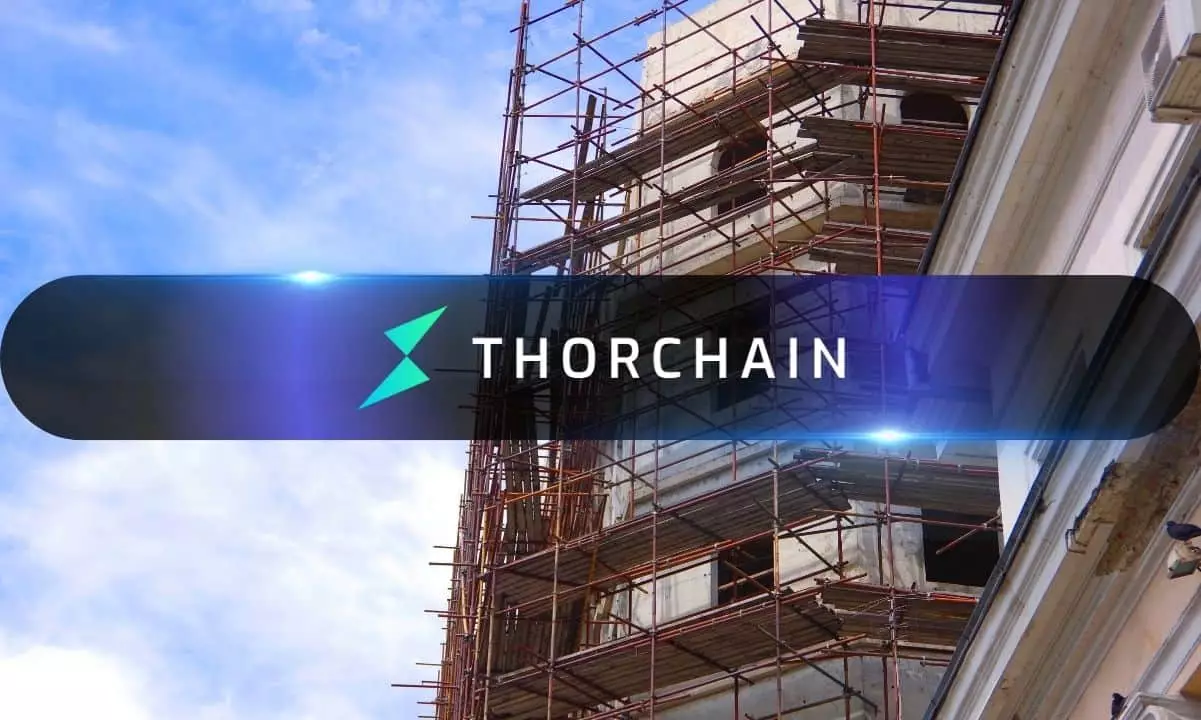As we usher in 2025, the once-promising landscape of decentralized finance (DeFi) has become cluttered with the shadows of uncertainty and falling valuations. THORChain, a Layer 1 network that boasted ambitious multi-chain liquidity solutions, finds itself struggling under a storm of macroeconomic pressures and internal shortcomings. The network has not only faced a tumultuous end to 2024 but now must confront the disconcerting realities laid bare in the first quarter of 2025. At the heart of this shaky foundation is RUNE, the network’s native token, which experienced a dramatic decline that has left investors reeling.
The Numbers Tell a Grim Story
To understand the gravity of the situation, we must scrutinize the numbers associated with RUNE’s performance. Closing the first quarter at a dismal $1.14, RUNE experienced a staggering 74.5% drop compared to the previous quarter. Such a significant decline far outstrips even the losses of major cryptocurrencies like Bitcoin and Ethereum, which recorded price declines of 12.6% and 45.5%, respectively. As a result, RUNE’s market capitalization plummeted to a level unseen since mid-2022, shrinking from $1.5 billion to a mere $400.9 million. These are not just numbers; they are indicators of waning trust among investors and the potential for a broader exodus from the platform.
The Illusion of Activity Amid Declining Metrics
Messari’s recent report highlights another layer to this unfolding drama, showcasing a noticeable decline in THORChain’s total value locked (TVL). By the end of Q1 2025, TVL had plummeted by 50.5%, a dramatic fall from $368.6 million to $181.1 million. While it’s commendable that native TVL in RUNE shot up by 93.2% — indicating some measure of user engagement and relative confidence in THORChain’s liquidity protocols — these figures mask a much bleaker reality. They suggest that while some users remain tethered to the platform, the overall appetite for RUNE in financial markets is diminishing, as signaled by the erosive downtrend in both price and confidence.
Participation Versus Organic Growth
Despite seeming participation levels, the undercurrent is one of worry. Average daily swap volumes have decreased by 24.4% QoQ, falling to $68.8 million and continuing the downward trend established since January. Even the dramatic spike in swap activity due to the exploitation of Bybit on March 2, where over $1 billion was processed in a single day, serves more as a cautionary tale than a validation of sustainability. These figures were primarily driven by illicit activities and do not accurately reflect the health of the platform. Compounded with a decrease in the average number of daily swappers by 14.5%, receding interest is palpable.
The Future: A Tough Climb Ahead
As we move forward, the question arises: can THORChain recover from this downturn? While there remains a contingent of loyal users who continue to navigate the network, the apparent disconnect between internal engagement metrics and external valuations raises alarm bells. The inherent volatility within the crypto realm only amplifies these concerns, suggesting a long and arduous road ahead for THORChain unless it can innovate, restore confidence, and re-establish itself as a credible player in the DeFi space. In navigating turbulent seas, the need for a steady hand and strategic foresight has never been more critical.














